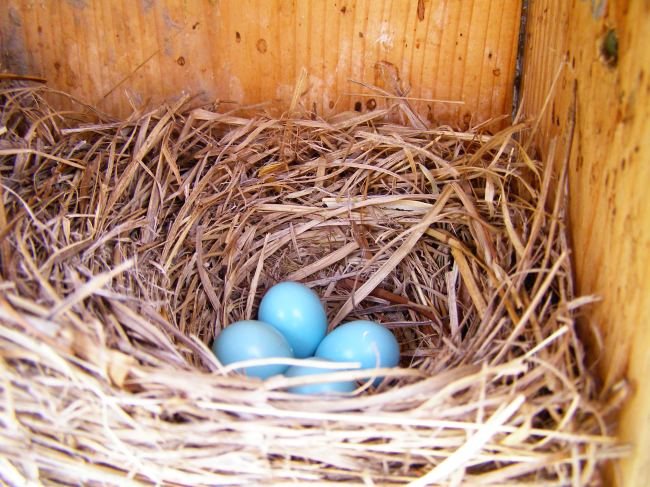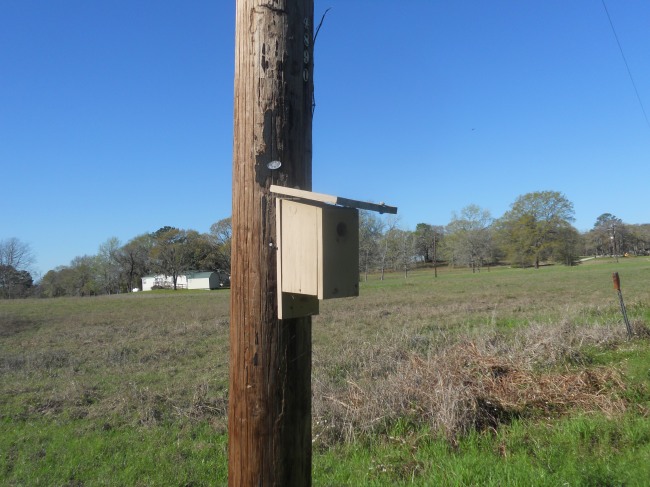2013 has been an exceptional year for Eastern blue birds at the OEC! I am currently the proud grandmother of 15 blue bird hatchlings, 7 pale blue eggs, 1 flying squirrel and 6 brown-speckled cream eggs from a random Carolina chickadee nesting in a blue bird box. I am eagerly watching the nests as the chicks hatch, develop feathers, gradually turn grey-blue, open their eyes, and get ready to learn how to fly. 
Starting in February, staff members here at the OEC began repairing, painting, and relocating blue bird boxes. I read in severeal articles that pairing blue bird boxes 15-25′ apart would help provide habitat for blue birds while preventing interferance from competitors such as house wrens and tree swallows. I took this into consideration when relocating boxes. I also relocated boxes that had been inactive for 4 + seasons, and others that had a history of predation or inacivity due to a close proximity to a woodline or brush cover. Once the 15 boxes were up, we began monitoring them each week and waited for the arrival of blue birds along our fence rows, in our garden and horse pasture.
Before the birds arrived, a flying squirrel took up residence in one of our boxes and has kept me company on my weekly visits to his nest box. He often peers out at me from inside his nest of Spanish moss and dry grasses, if he hasn’t scampered out of his box to watch me from a limb up higher on his pine tree. The first time I saw him, he leapt out at a co-worked and we both nearly jumped out of our skins.
During the first week in March, blue birds began perching in our garden and along the fencerows of 3188. Staff members eagerly reported their sightings and I watched with interest as nest material started showing up in some of our boxes. Long strands of dry pine needles formed the bottom of the nests and over the week gradually gave way to fully-formed, dry grass cup nests lined with bits of fuzz and fluff. 
Midway through March, baby-blue, marble-sized oval eggs started showing up in the nest boxes. Occasionally I would open a box to find a mother blue bird faithfully incubating her eggs, which provided me with an amazing view of such an awesome bird! 
Then finally, the last week of March, the first round of tiny, pink hatchlings appeared in the nest. I hadn’t anticipated how excited I would be to find these truly ugly little things for the first time, but there I was, gaping over how cool it was to have taken a part in the life cycle of these tiny birds.
And now, the first week in April, I have one nest of chicks with fully developed feathers and eyes wide open preparing to fledge this week, two nests scheduled to fledge next week, three eggs hatching sometime today and two nests with brand new hatchlings, fluffy-headed with their eyes closed and mouths gaping. This has been a remarkably rewarding project to work on this year. I have shown my students the nests as they develop and change between the weeks and my excitement seems to rub off on them, too. 
I recommend building bird boxes of your own. It is truly rewarding and provides much-needed habitat to fragile populations of some really cool animals. Following this post I will provide plans for buildling your own boxes.
From one nature nerd to another (hopefully), thanks for reading!
-Taniya Fatticci, OEC
